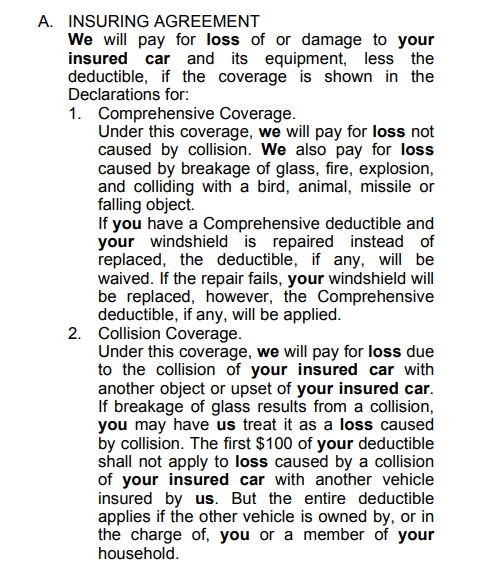Some Ideas on Pacific Prime You Need To Know
Some Ideas on Pacific Prime You Need To Know
Blog Article
The 8-Second Trick For Pacific Prime
Table of ContentsThe Basic Principles Of Pacific Prime Our Pacific Prime PDFsPacific Prime Can Be Fun For AnyoneWhat Does Pacific Prime Mean?Not known Facts About Pacific Prime

This is because the information were collected for a period of strong financial performance. Of the estimated 42 million individuals who were uninsured, almost regarding 420,000 (concerning 1 percent) were under 65 years old, the age at which most Americans become qualified for Medicare; 32 million were grownups in between ages 18 and 65, about 19 percent of all grownups in this age; and 10 million were children under 18 years old, about 13.9 percent of all kids (Mills, 2000).
These price quotes of the number of persons without insurance are generated from the annual March Supplement to the Present Populace Survey (CPS), performed by the Demographics Bureau. Unless or else kept in mind, nationwide price quotes of people without medical insurance and percentages of the populace with different kinds of protection are based upon the CPS, one of the most extensively used resource of quotes of insurance policy protection and uninsurance prices.
A Biased View of Pacific Prime

Still, the CPS is specifically beneficial due to the fact that it generates yearly estimates relatively promptly, reporting the previous year's insurance policy coverage estimates each September, and since it is the basis for a consistent collection of estimates for greater than 20 years, enabling evaluation of patterns in coverage with time. For these factors, along with the considerable use the CPS in other studies of insurance policy protection that are presented in this record, we rely upon CPS estimates, with constraints kept in mind.

The estimate of the number of without insurance individuals expands when a populace's insurance coverage condition is tracked for several years. Over a three-year duration beginning early in 1993, 72 million people, 29 percent of the united state populace, were without coverage for a minimum of one month. Within a solitary year (1994 ), 53 million individuals experienced at the very least a month without coverage (Bennefield, 1998a)
6 out of every ten uninsured grownups are themselves utilized. Working does boost the probability that one and one's family members will certainly have insurance coverage, it is not a guarantee. Also participants of family members with 2 full-time breadwinner have almost a one-in-ten possibility of being uninsured (9.1 percent without insurance rate) (Hoffman visit site and Pohl, 2000).
The Ultimate Guide To Pacific Prime
New immigrants represent a significant proportion of people without health insurance policy. One analysis has actually connected a significant part of the recent development in the dimension of the united state without insurance population to immigrants that got here in the country in between 1994 and 1998 (Camarota and Edwards, 2000). Current immigrants (those who involved the United States within the past four years) do have a high rate of being without insurance (46 percent), yet they and their children represent just 6 percent of those without insurance policy nationally (Holahan et al., 2001).
The connection between health and wellness insurance coverage and accessibility to care is well developed, as recorded later on in this phase. Although the relationship between medical insurance and wellness end results is neither direct nor simple, a considerable clinical and health and wellness solutions research study literary works links medical insurance coverage to improved accessibility to care, far better top quality, and enhanced personal and population health standing.
Degrees of analysis for analyzing the effects of uninsurance. This conversation of health and wellness insurance protection focuses largely on the united state populace under age 65 due to the fact that basically all Americans 65 and older have Medicare or other public protection. Furthermore, it concentrates specifically on those with no health insurance policy for any type of size of time.
The Of Pacific Prime
The issues encountered by the underinsured remain in some areas comparable to those encountered by the uninsured, although they are usually much less extreme. international travel insurance. Uninsurance and underinsurance, however, include distinctly various plan concerns, and the strategies for resolving them might vary. Throughout this research study and the five reports to comply with, the main emphasis gets on individuals without medical insurance and thus no aid in spending for health and wellness care beyond what is available with charity and safety net institutions
Health insurance policy is an effective aspect influencing receipt of care since both people and medical professionals react to the out-of-pocket rate of services - https://www.pubpub.org/user/freddy-smith-2. Medical insurance, however, is neither necessary neither enough to obtain accessibility to medical services. The independent and straight effect of health insurance policy protection on accessibility to health solutions is well developed.
Others will certainly get the wellness treatment they need also without medical insurance, by spending for it out of pocket or seeking it from providers who use treatment free or at highly subsidized rates. For still others, medical insurance alone does not ensure receipt of care as a result of other nonfinancial barriers, such as a lack of health and wellness care suppliers in their area, restricted accessibility to transport, illiteracy, or linguistic and cultural distinctions.
What Does Pacific Prime Mean?
Formal research study regarding without insurance populaces in the USA dates to the late 1920s and early 1930s when the Committee on the Expense of Medical Treatment created a series of reports about financing medical professional workplace gos to and hospital stays. This concern came to be prominent as the varieties of clinically indigent climbed up throughout the Great Depression.
Report this page